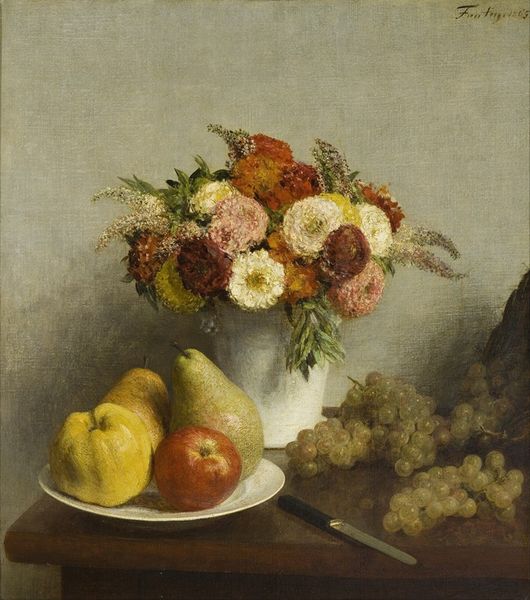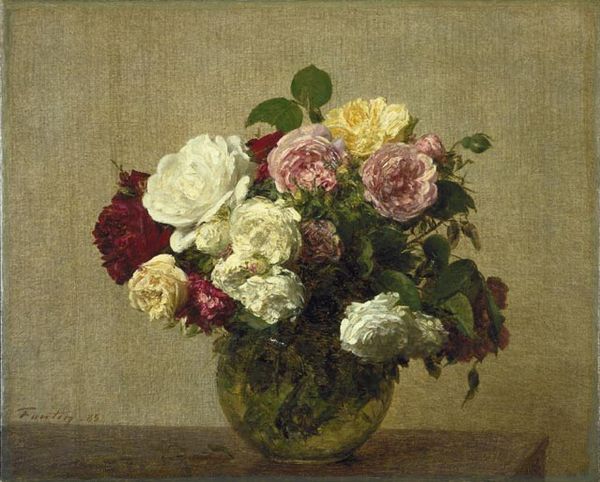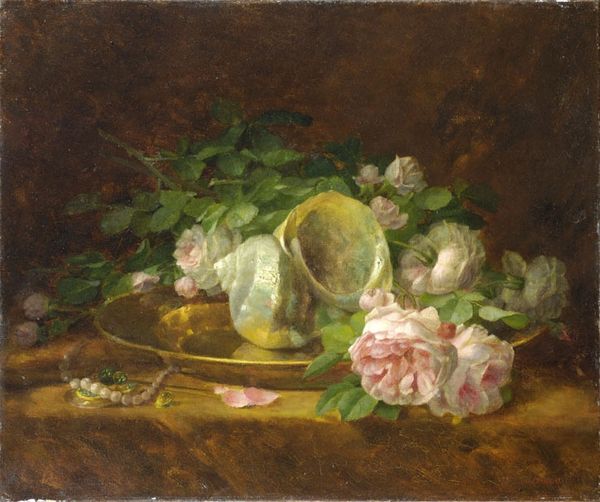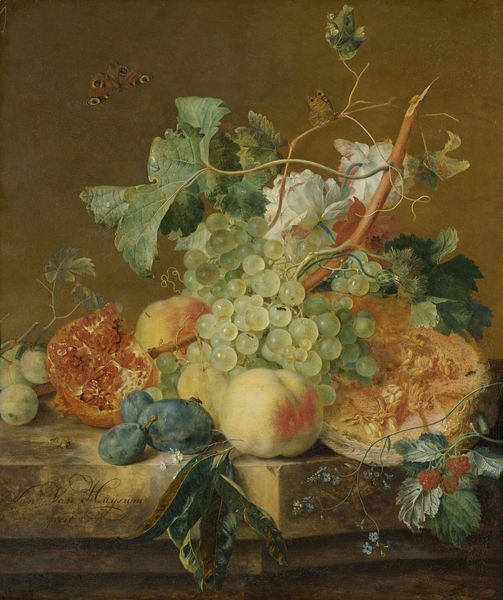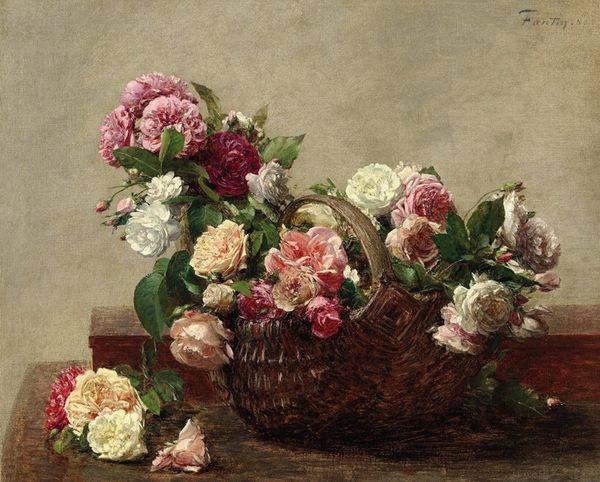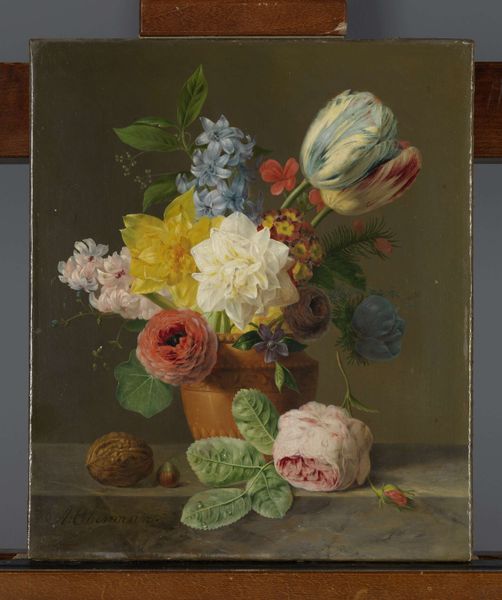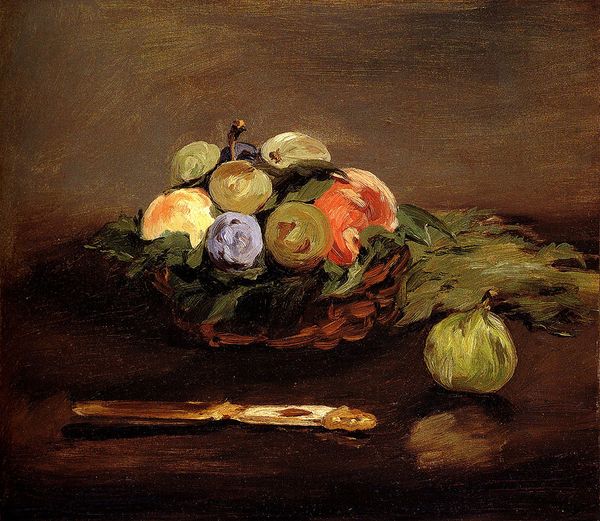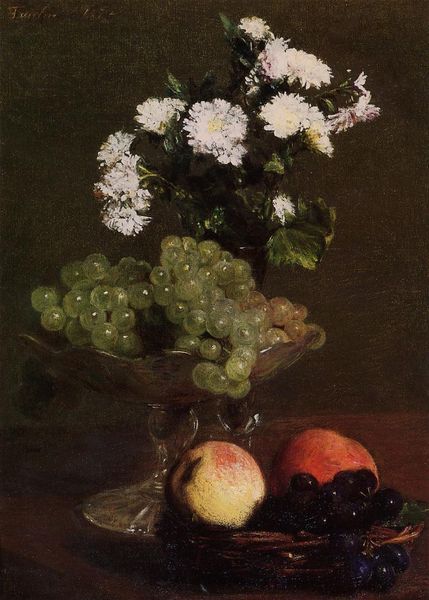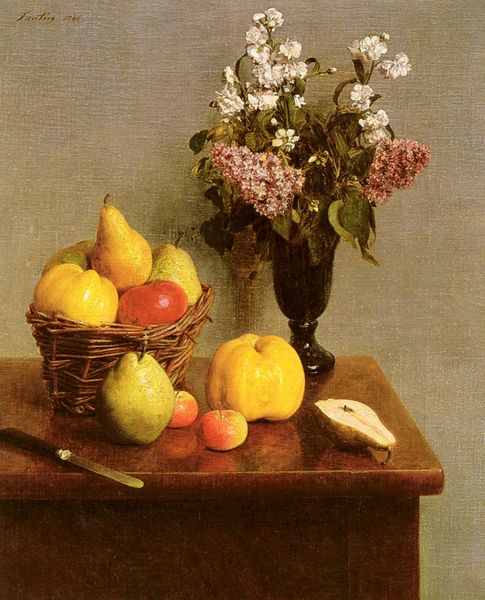
Dimensions: 13 5/8 x 16 3/8 in. (34.6 x 41.6 cm)
Copyright: Public Domain
Curator: Welcome. We’re looking at Henri Fantin-Latour’s "Still Life with Roses and Fruit" from 1863. Editor: Immediately, I’m drawn to the texture. The thick impasto of the roses, the way the light hits that pear—it's a study in material presence. Curator: Absolutely. Fantin-Latour was fascinated by the relationship between the art world and the domestic sphere. These still lifes often decorated bourgeois homes, serving almost as emblems of status and cultivation, speaking volumes about Victorian ideals of femininity and domesticity. Editor: You know, what strikes me is that this isn’t just some idealized depiction. The brushstrokes are loose, almost rough in places. You can almost feel the physicality of the paint itself. It connects to a much wider network of labor, artistic skill, and trade to enable that luxury. Curator: Exactly! And I think that tension between reality and idealization is central. We're aware of his gender, position and influence as a man, artist, and art producer depicting these idealized themes that often have implications around ideas about feminine virtues in terms of display and how his labor contributes to a certain historical depiction. The romantic style reminds me of a push-pull between fantasy and reality, aspiration and daily life. Editor: The choice of materials – the cut crystal glass, the imported grapes – all of these things speak to a culture steeped in commerce and consumption. It's a commentary of luxury made physical in paint. How do we interpret art knowing all this? Curator: Precisely. And it’s by interrogating these very constructs, these intersections of class, taste, and gender that we begin to unravel the narratives encoded within these seemingly innocent arrangements of roses and fruit. There’s also that question of longevity – a preserved moment. Editor: Agreed, but in seeing how this came together and by highlighting its materiality, maybe we see its very process too? Food for thought, pardon the pun. Curator: Indeed. I’m reminded of how this painting opens doors into the understanding of social roles. Editor: And I am reminded of the very tactile choices behind its execution, and how that informs how it is both made and perceived.
Comments
No comments
Be the first to comment and join the conversation on the ultimate creative platform.
